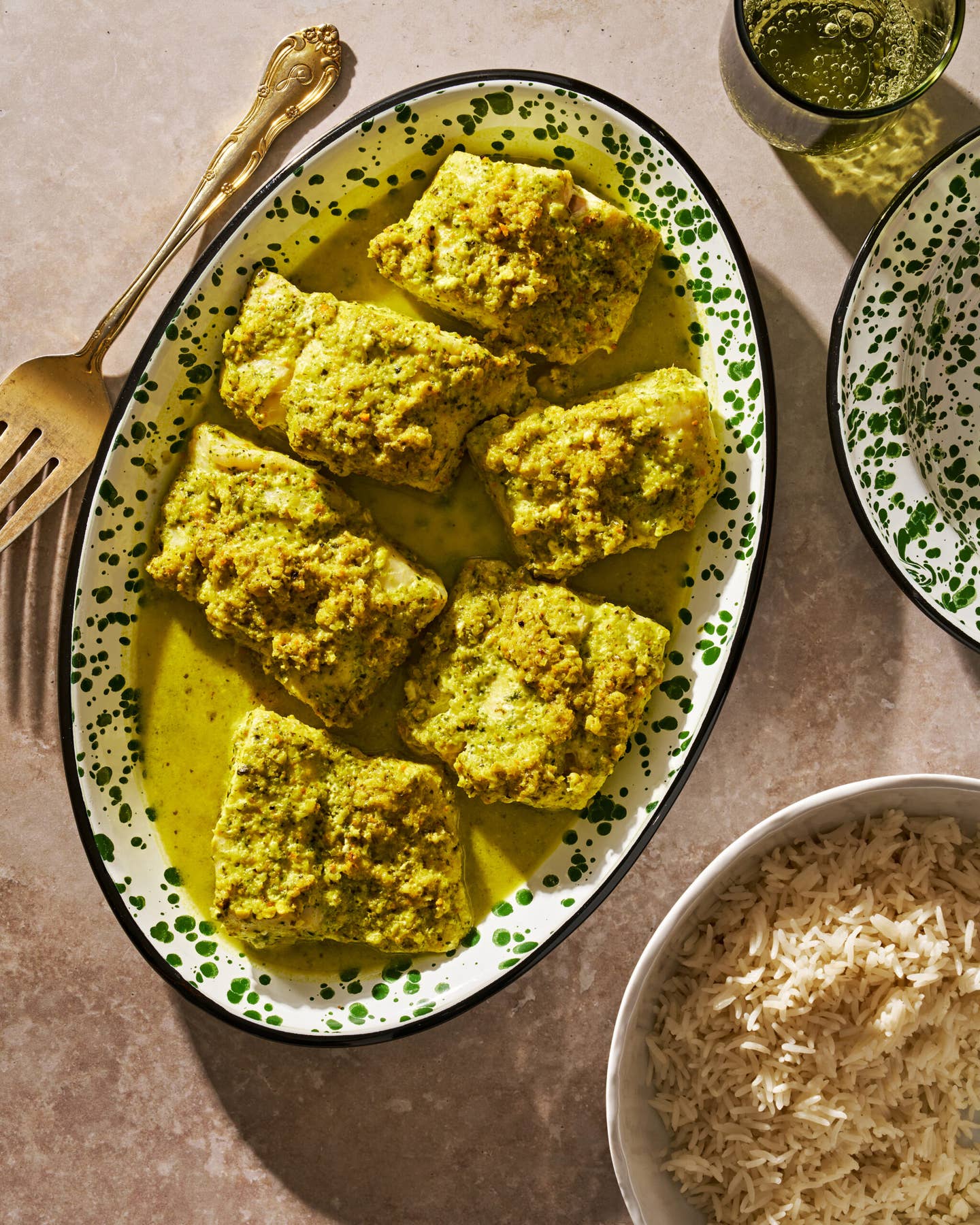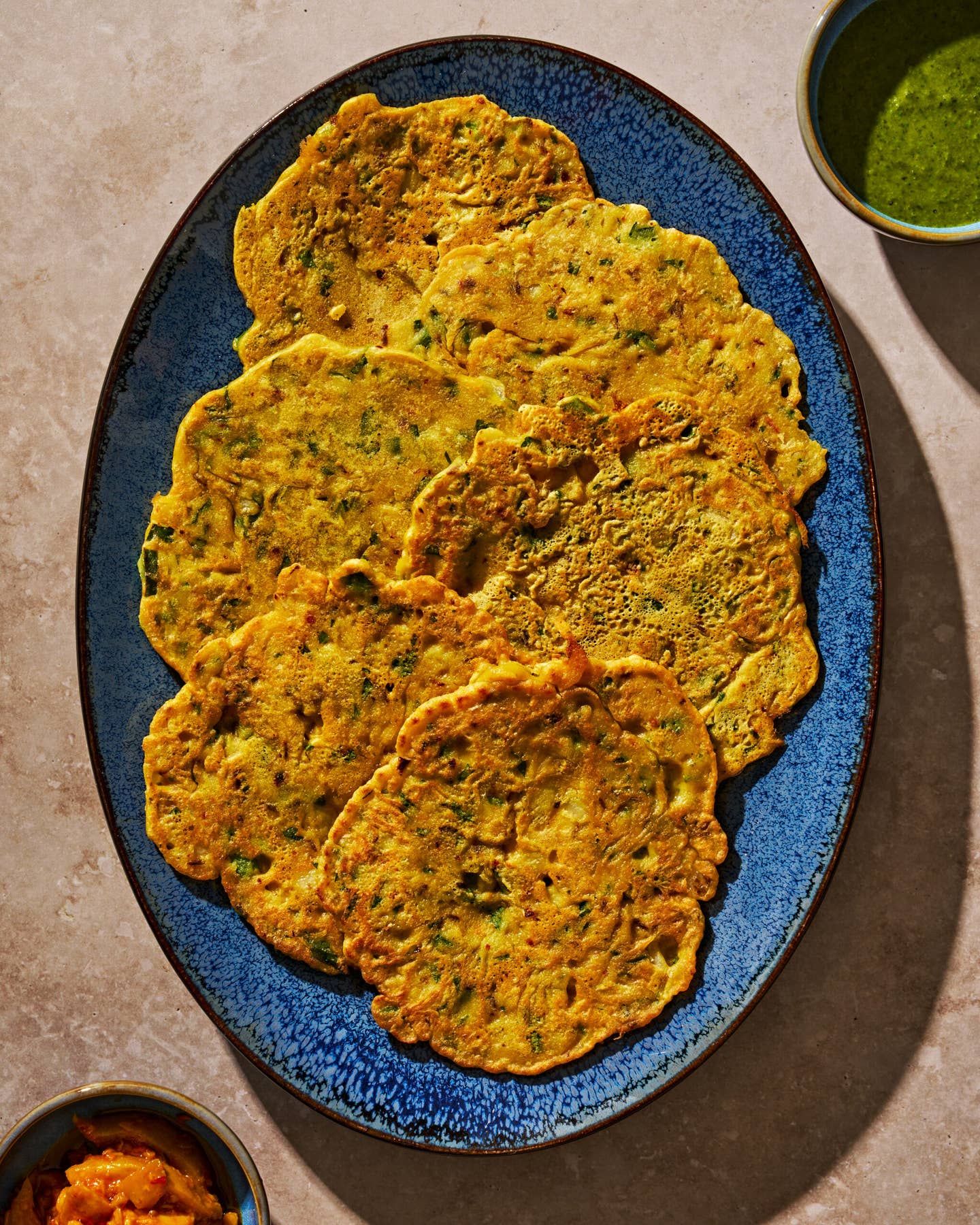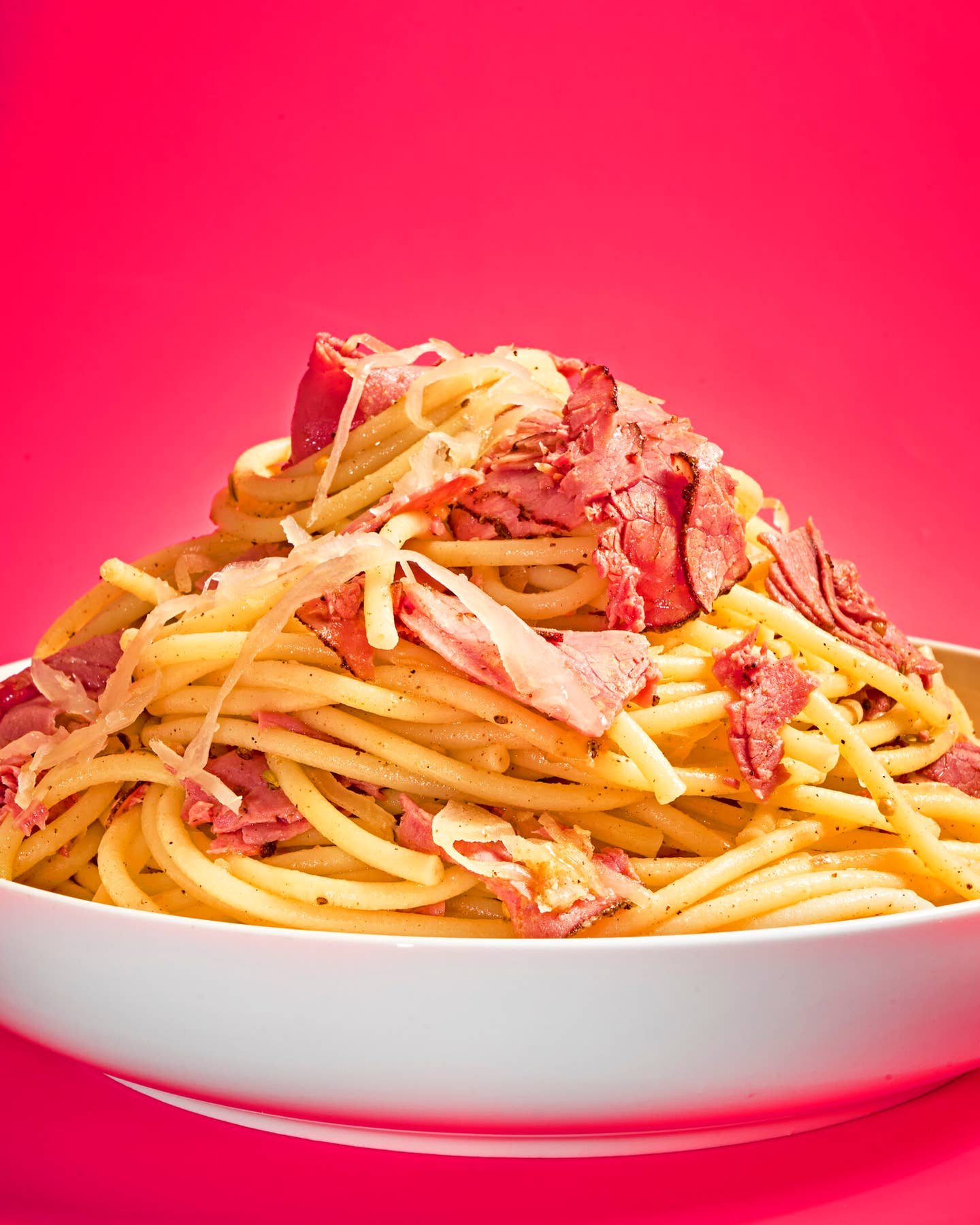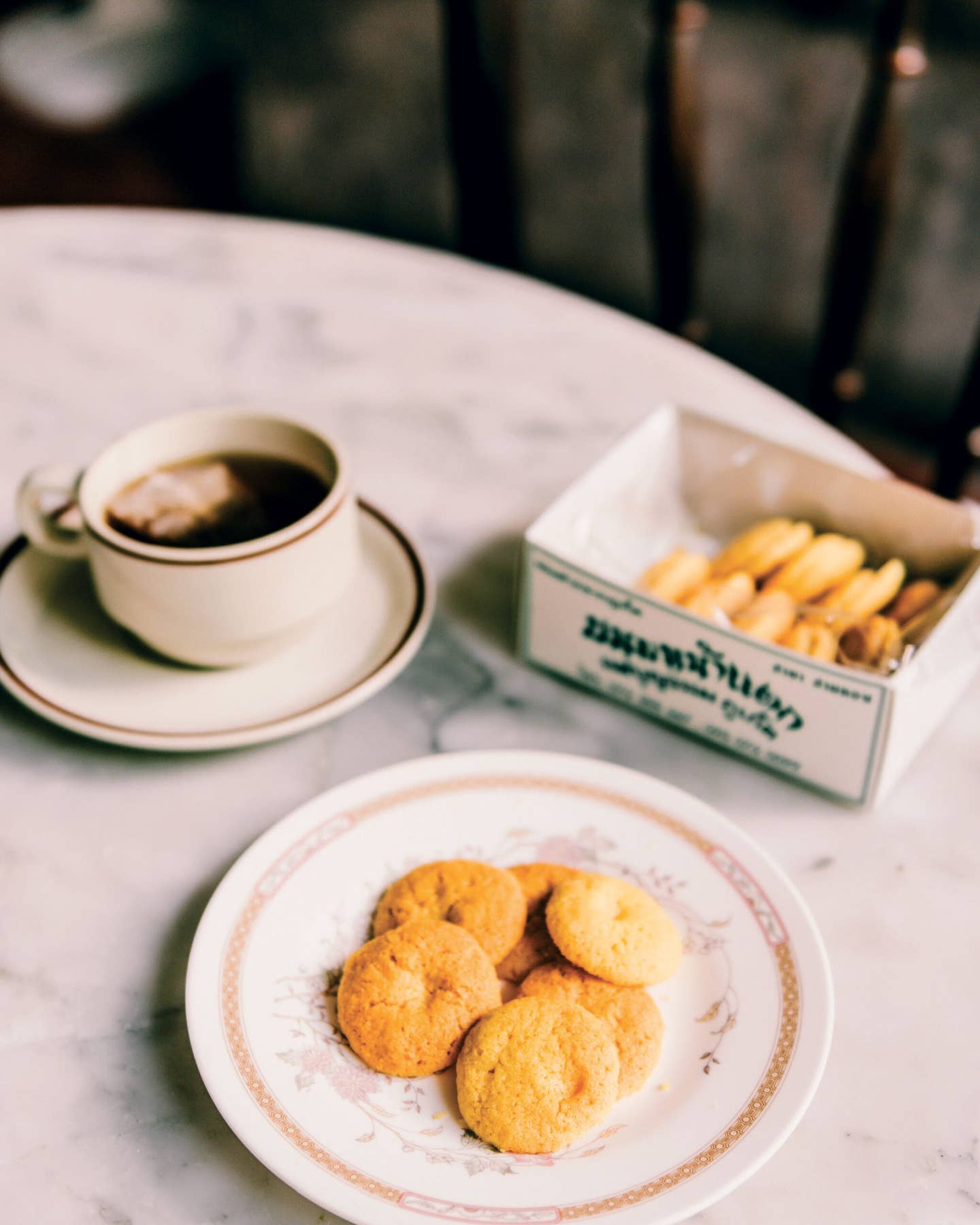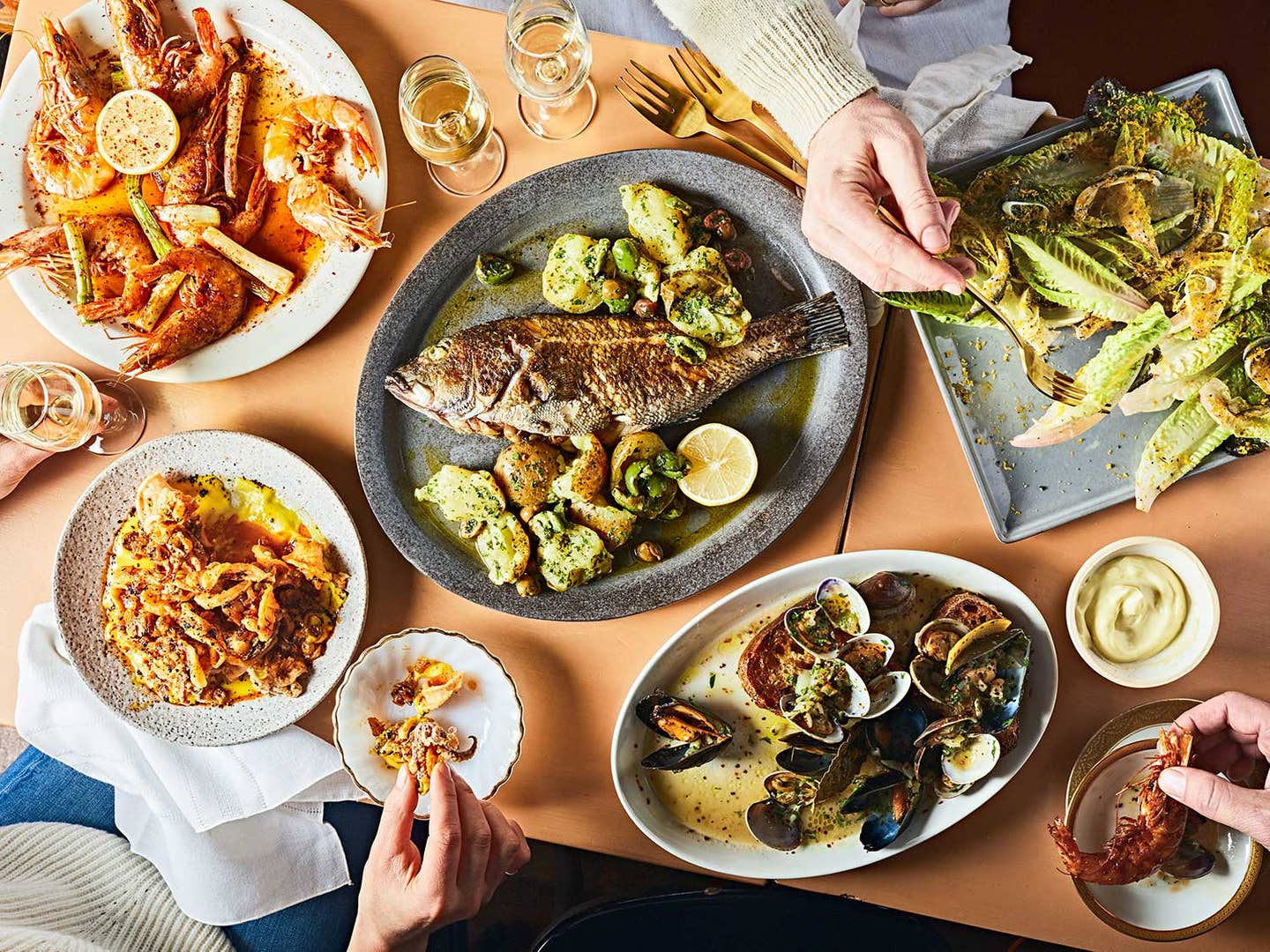
An Eye-Opening Look at the Feast of the Seven Fishes
What this Christmas Eve tradition really is, why you should cook it this year, and new seven fishes recipes from Hart’s restaurant in Brooklyn
When Beatrice Ughi, founder of the fine specialty Italian food shop Gustiamo, came to New York City from Naples, Italy thirty years ago, she had never heard of the Feast of the Seven Fishes. "None of my Italian friends here [in the US] had heard about it, either," she says. "Yes, in the South [of Italy], fish is on the menu on Christmas Eve. But never seven fishes." Still, after decades of living in New York, Ughi, whose husband is Jewish-American, still consistently hosts a fish-focused Christmas Eve dinner for family and friends. She serves mussels, spaghetti con le vongole (clams), lobsters on the grill, and pandoro, the traditional Italian yeasted bread often served covered in sugar. "[This] is pretty much what my family would cook in Italy," she explains.
A complete lack of familiarity with the seven fishes tradition is actually not uncommon among Italian cooks. For Giorgia Goggi, chef at Masseria Moroseta in Puglia who hails from Milan, the name meant absolutely nothing. "Sincerely, the name is totally new to me," Goggi said in an interview. "I had to look for it on Wikipedia to understand that it's what we generally call Vigilia," she added. According to the young chef, "Vigilia is a very important day and meal on Christmas Eve in Italy, from Rome down to the deep south of the country. Campania is known for its never ending Vigilia dinner, for example, considered more important than Christmas itself."
In Goggi's family celebration, seafood is featured everywhere, especially in the antipasti. A must-have ingredient is baccalà, or salt cod, in different forms, she says—fried with artichokes, in a salad with capers and olives, and as mantecato, the whipped preparation with garlic toasts. She also eats fried-then-pickled eel, a fritto misto of fish and vegetables, a potato salad dressed in mayonnaise with boiled lobster and shrimp, and broiled mussels, oysters, and scallops with crispy garlic breadcrumbs, among other dishes. "All those seafood antipasti require lots of time, yes, and it's a great moment to spend together," Goggi explains.
Katie Parla, author of Tasting Rome and the upcoming Food of the Italian South, had the reverse experience with the Feast of the Seven Fishes: An Italian-American from New Jersey, Parla moved to Rome in 2003 to find that her family's seven fishes tradition was not, in fact, from Italy, as she was raised to understand. "I assumed the tradition was Italian," she says. "It turns out, it's as Italian as veal parmesan. That is, not at all."
"On Christmas Eve, Romans as well as most Italians do eat fish due to the Catholic tradition of eating lean, meatless meals before major holidays," Parla adds. But their Christmas Eve meal is huge and always features floured and fried vegetables like romanesco, cauliflower, artichokes, or squash blossoms; and sometimes fish carpaccio, marinated anchovies, octopus salad, fried eel, or marinated eel cooked in a broth, too. "Eel is always present in some form," she says. Most Romans also finish the meal with pasta with clams or anchovies and a whole roasted fish, baccalà, or fish stew known in Italian as zuppa di pesce.
“I feel pretty confident in saying that if you only served seven fish dishes on Christmas Eve in Italy, all your guests would feel pretty disappointed at the meager spread,” Parla says.
The custom of eating seafood and eschewing meat on Christmas Eve stems from the Roman Catholic tradition of eating fish before holy days as a form of fasting. (But in the Catholic sense, the word "feast" typically denotes many of the holy days themselves, not an abundant meal before it.) Fish was traditionally considered magro, an Italian word that translates to "thin", but was used historically to denote food for poorer people. Traditionally, fish fell into this category, whereas meat was historically considered the food of the rich.
Listen To An Interview Of How The Feast Of The 7 Fishes Started
It’s unclear where the fixation on seven types of seafood came from in the America meal—some say it represents the seven sacraments, seven cardinal virtues, or seven days of the week. Some Italian-Americans set a different number all together, like 12 (guessed by some to represent the 12 apostles).
Cristina Bowerman, chef at the Michelin-starred Glass Hosteria in Rome, was born in Bari in Puglia, where her family still lives in the South of Italy. When she closes her restaurants on Christmas Eve and Christmas day, she cooks the same menu at home in Rome that her mother cooked every year: antipasti of crudo (a mix of many different shellfish, served raw), marinated anchovies, smoked salmon with butter crostini, and frittelle di baccalà (or cod fritters). The pasta is always spaghetti al tonno (tuna fish), and the main dish is a whole fish baked in a salt crust with fried zucchini blossoms and other vegetables on the side. Bowerman says that, in her opinion, everybody in Italy eats fish on Christmas eve—from North to South—but especially in the south where fish is just more readily available and abundant. She worked in California and Texas, but said she never heard of The Feast of the Seven Fishes except by Italian-Americans living in the New York area.
At Hart’s in Brooklyn, a Mediterranean-focused neighborhood restaurant that focuses largely on fish, chefs Katie Jackson and Nick Perkins have their own approaches to the feast at home. “My grandmother is Italian, from Trieste in northeast Italy,” Perkins says, “so I have cooked a lot of seven fishes dinners over the years. I think more than anything it’s a really fun challenge and fun menu to design—there’s so much flexibility with it. If you’re just trying to hit the number seven, you can create and combine like you want. The more variation the better. It’s supposed to be abundant and opulent in a way so having more creatures is always going to be more exciting.”
Jackson, who is newer to the tradition, having done it just two years and not having any Italian-American family or rituals, says preparing in advance is key to a smooth meal. "We try to do a lot of our sauces and soffrittos ahead of time," she shares. "Some of them, like agrodolce (a sweet and sour sauce she serves with fried squid) only get better after sitting a few days."
If hitting the number seven is a priority, Jackson and Perkins suggest throwing in a couple of fish dishes that take no cook time whatsoever, like oysters with lemon, anchovy fillets on top of a salad or vegetable, or shaved bottarga over lettuce or pasta. But as more and more people adopt the tradition in America as their own, there appear to be no hard and fast rules about maintaining the number. In Italy, chefs and home cooks don’t seem concerned at all with the total number of fish served—just that there is an abundant spread.
Get the recipe for Little Gem Lettuces with Marinated Anchovies and Bottarga »
Goggi agrees that flexible is best when tailoring a menu to your celebration. The chef, known for her global infusion of flavors into traditional Italian food, says that among her family's typical Vigilia dishes, it's hard for her to prepare something strictly traditional and without creative twists. "I like a splash of sake with spaghetti alle vongole, kimchi mayo for fritto (fried mixed fish), or some Szechuan pepper for crostini with butter and anchovies. I love the idea of modernizing [the meal]. The key is balancing new elements with classics."
To Parla, the idea of modernizing the menu is a little more of a gray area: “It depends on how it's modernized,” she says. “If you think about it, the current [menus are] modern compared to what people in Rome were eating over a hundred years ago. But today the things served are still called traditional.”
Recipes for a Modern Feast of the Seven Fishes
Whole Roasted Black Bass with Potatoes, Green Olives, and Salsa Verde
Fried Calamari with Saffron Aioli and Agrodolce
Clam and Mussel Toasts
Little Gem Lettuces with Marinated Anchovies and Bottarga
Head-On Shrimp with Chile Oil and Scallions
Shrimp Cocktail
Pasta with Octopus Ragu and Stracciatella
Linguine with Crab in Spicy White Wine Sauce
Lorighittas with Shrimp, Mussels & Orange
Crispy Calamari with Pesto Mayonnaise
Bourbon-Roasted Lobster
Baccala Salad
Keep Reading
Continue to Next Story


